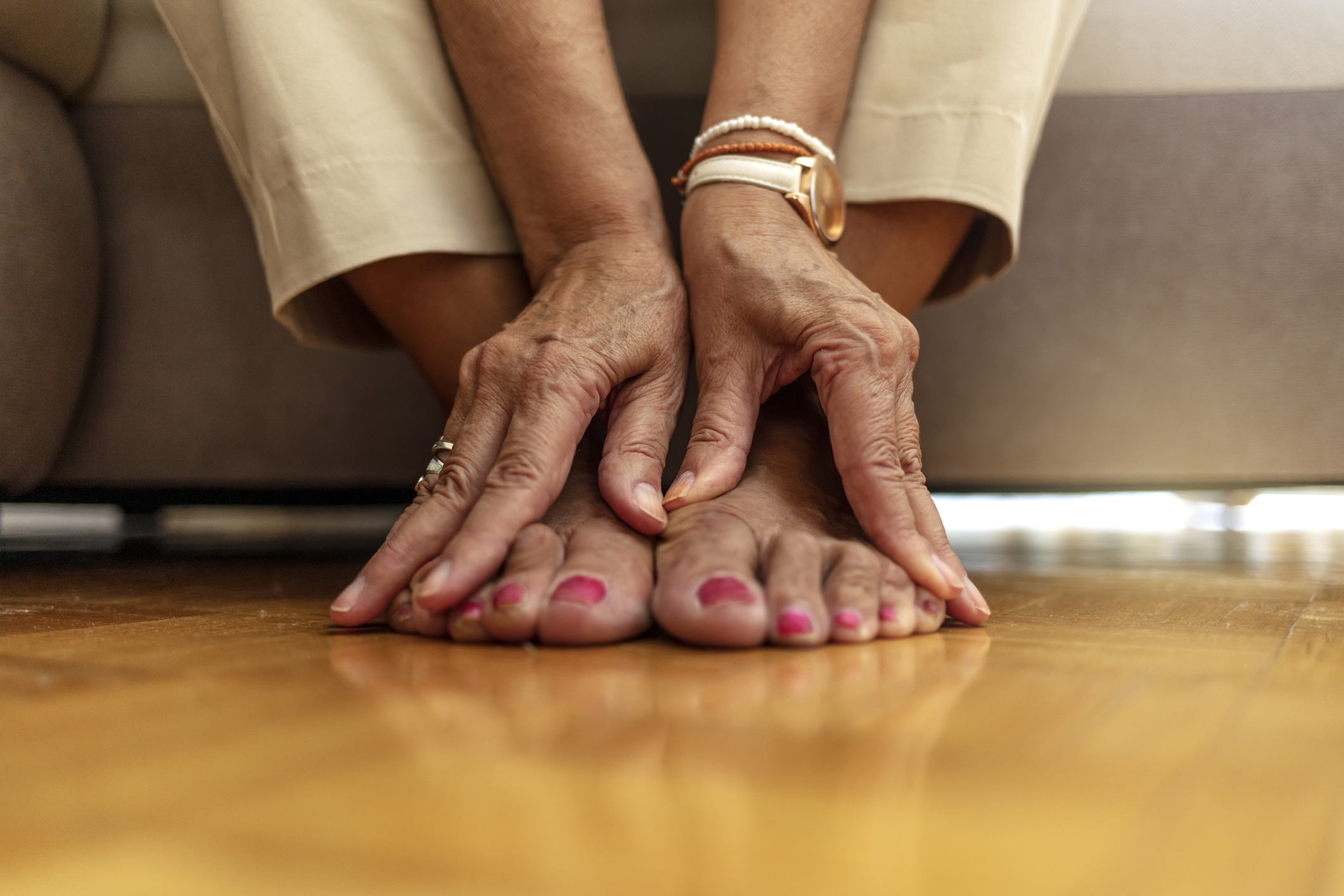
Healthy feet are an important part of overall wellness for seniors.
It’s challenging to put your best foot forward when pain is part of every step. Foot problems are not uncommon as people get older, which is understandable; there are so many delicate bones that bear the weight of our bodies. Not only that, but because they’re far away from the heart, our feet might not be getting the amount of oxygen-rich blood needed to remain healthy – particularly if a health problem like diabetes restricts blood flow to the feet.
However, many older adults prefer to just grin (or grit their teeth) and bear it, rather than searching for help for hurting feet. This may result in not merely growing discomfort, but limited mobility and balance issues. Difficulties with the feet may also be a warning sign for other health conditions that require diagnosis and treatment.
Watch Out for These Everyday Senior Foot Issues
Foot pain might result from:
- Dried-out skin. Throughout the cold winter season, dry skin is common. On the feet, it can cause cracks which are not just painful, but can lead to infection.
- Corns and calluses. These dense areas of dead skin on the feet usually develop from the friction from shoes that fit poorly.
- Bunions. In contrast to calluses and corns, bunions are the consequence of changes to bone structure. They may be incredibly painful, usually occurring on the outer part of the big toe joint.
- Hammertoes. Rather than all of the toes lying flat, hammertoes are misshapen and point up. You may notice a corn along with the deformed toe.
- Arthritis. Arthritis can hit any of our joints, even the feet, creating both pain and mobility issues.
- Plantar fasciitis. Plantar fasciitis is caused by bony growths formed when a ligament on the heel becomes swollen. Walking as well as simply standing can be very painful with this specific condition.
- Ingrown toenails. Toenails that grow at a different angle than usual can become ingrown in the flesh of the toe, often requiring a surgical procedure to eliminate.
- Fungal infections. Wet feet make a good breeding ground for fungus that may occur between the toes.
Dr. Said Atway, clinical professor of podiatry at The Ohio State University Wexner Medical Center, sees seniors dealing with these kinds of problems on both ends of the spectrum: either highly active and developing injuries from excessive use, in addition to individuals with an inactive lifestyle suffering from limited circulation to the feet and poor overall health. He highlights the value of proper footwear for older adults, who should keep from going barefoot or wearing shoes with too little support, such as flip flops.
To find the best-fitting, most comfortable footwear, he suggests:
- Shopping for shoes later in the day, as gravity causes the feet to swell a bit throughout the day
- Testing out shoes by walking in them for at least 20 minutes; giving them a test run on a carpeted area at home should avoid any wear on the bottoms of the shoes, so they can be returned if uncomfortable
- Seeking the recommendation of a podiatrist on the best type of shoe for an older adult’s specific concerns
Healthy feet can improve a senior’s overall wellness. Keeping the feet clean, moisturized, and dry, and performing daily inspections to check for problems, is advised for all older adults. An annual visit to the podiatrist can also help circumvent problems.
Compassionate Nursing Services, a provider of senior home care in St. Louis and the surrounding communities, is here to help older adults kick up their heels in a variety of ways: ensuring good foot health, providing transportation to search for shoes or to the podiatrist, taking regular walks together to boost blood flow, and much more! Give us a call at 314-432-4312 for a free in-home assessment today.
